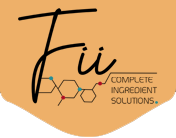Malic acid is found in fruits and vegetables. The name of Malic acid is derived from the Latin word for apple, ‘mălum’.
Malic Acid is an organic compound, a dicarboxylic acid that is the active ingredient in sour and tart foods. Malic Acid is acidulant that generated during fruit metabolism and occurs naturally in all fruits and many vegetables.
It’s mellow, smooth, persistent sourness blended with multiple food acids, high intensity sweeteners, flavours and create a distinctive taste experience in foods, beverages, and confections.
Malic Acid is used as a flavour enhancer in food preparation for confectionaries, beverages, fruit preparations and preserves, desserts, and bakery products. It is also used in the preparation of medical products such as throat lozenges, cough syrups, effervescent powdered preparations, toothpaste and mouthwash. Additionally, Malic Acid is used in the manufacture of skin care products to rejuvenate and improve skin conditions.
The above such properties of Malic Acid has made Malic Acid “The Choice of Millions” For Substituting citric acid or adding with citric acid when artificial sweetener are used in place of sugar for making the product pleasant tart / masking off bitter taste/long lasting taste.
What are the advantages of Fuso Malic acid?
- Malic Acid gives pleasant tart & long lasting taste in the products.
- For any Food product that contains “Alternative Sweetener” – Malic Acid is an essential Part for flavour enhancing and masking the bitter off note of product caused by “Citric Acid”
- Fuso Malic acid increasing energy levels and effective metal chelator which reduces the risk of toxicity. Heavy metal overload has been linked to serious problems like liver disease and brain disorders like Alzheimer’s disease.
- Fuso Malic acid also helps maintain oral hygiene. It stimulates the production of saliva, which reduces the number of harmful bacteria
circulating in your mouth, teeth and gums. - Fuso Malic acid makes your skin to look healthier, younger, and firmer.
- Lower melting point and hygroscopicity than other acids
- Economical acidulant blends with other acids.
- Extremely stable
- Non-Toxic
- Very soluble and easy to handle.
- No Side Effects
How much Fuso Malic Acid may safely consume?
People may consume Malic acid in food and beverage products on a daily basis without concern that they are exceeding a safe intake level When evaluating the safety of new food ingredients like Malic acid, health authorities compare an estimate of the ingredient’s maximum daily intake with the highest daily consumption level consumed in preclinical and clinical studies that was shown to be without harmful effects. Ideally, the intake estimate will be substantially less than the actual consumption levels shown to be without adverse effect in the preclinical and clinical studies. Studies show that up to 50% citric acid is replaced with Malic acid when product is sweetened by artificial sweetener.
Can we use Fuso Malic Acid in our product if Artificial Sweetener is used?
Peoples use artificial sweetener for the sweetness of our products it produces slightly off bitter taste on the product due to no replacement of citric acid with Malic acid in our products. So if we use artificial sweetener then replace up to 50% of citric acid with Malic acid is compulsory which masks off bitter taste and gives pleasant sour and flavour to the products.
Carbonated Beverages

Adding Malic acid improves economies, especially in “Artificially sweetened products”. Flavours are enhanced, allowing less flavour to be used, and the overall flavour profile is broader and more natural.
Malic Acid 50% along with Citric Acid Provides Better Flavour Enhancement and masks the bitter off note of Citric Acid …. if “ Artificial Sweetener “ is used in Carbonated Drink .
Non-Carbonated Beverages

Malic acid is a preferred acidulant for still beverages (fruit drinks, nectars, iced-teas, sports drinks, calcium fortified juices), because it enhances fruit flavours, improves pH stability, and masks the aftertaste of some salts.
Malic Acid 50% along with Citric Acid provides long lasting pleasant synergistic taste in Non Carbonated Drinks … if Artificial sweetener is used in the Drinks.
Low Calorie Beverages

In beverages containing intense sweeteners, less Malic acid than Citric is required to achieve the desired sourness and flavour at a higher pH. Malic acid’s extended sourness masks sweetener aftertaste and its blending and fixative abilities give a balanced taste.
In a study with 14-30 year olds, aspartame sweetened low-calorie soft drinks acidified with Malic acid were preferred over those with Citric acid. For “alcoholic” apple ciders, Malic acid is added to maintain a consistent “sharp” taste. In wines, malolactic fermentation improves the flavour profile of the wine.
Powdered Mixes

In iced tea, sports drink or fruit soup dry mixes, Malic acid is preferred due to its rapid dissolution rate and flavour enhancement qualities. Since Malic acid provides more sourness than Citric acid, less acidulant is required and unit weight can be reduced.
Acidified “Dairy” Products

Whey-based protein beverages acidified with Malic acid have enhanced fruit flavour and less noticeable whey flavour. Fruit flavoured milk drinks made with fruit juice and acidified with Malic acid have improved flavour and palatability.
Coagulated soy-milk acidified with Malic acid produces a yoghurt-like product. Calcium Supplements and Calcium-fortified Beverages In liquid calcium supplements, Malic acid adds a tart and fruity flavour while controlling the pH. In calcium-fortified beverages, using Malic acid in place of Citric acid prevents turbidity due to precipitated calcium citrate.
CONFECTIONERIES

Malic acid gives an appealing tartness to hard, soft, tabletted and sugarless candies as well as chewing gum. Blending multiple acids creates unique tasting confections.
For example, to prolong the sourness in candy or chewing gum, Citric acid is used for an initial sour boost, Malic acid for a lingering sourness, and Fumaric acid to sustain the tartness even longer.
Malic acid’s high solubility allows it be blended with cooled confections. Adding acids at the end of the candy making process minimises sugar inversion.
Hard Candy

Malic acid boosts sourness intensity and enhances fruit flavours. It has a lower melting point than other food acids – this means that it can be incorporated into the molten hard candy without added water – shelf life is increased since the initial moisture level in the hard candy is lower.
Soft Candy

In agar, gelatin or pectin-based candies such as jellies and gummies, Malic acid is used to achieve a natural fruit flavour profile, proper gelling and good product clarity.
Malic Acid 50% along with Citric Acid Provides Better Flavour Enhancement and masks the bitter off note of Citric Acid …. if “Artificial Sweetener “ is used in Carbonated Drink.
Sugarless Confections

Malic acid is preferred over Citric acid in this application because it enhances flavour, especially fruit flavours, and boosts sweetness. Blending the sorbitol solution during the heating process is made easier by adding Malic acid.
FRUIT PREPARATIONS AND PRESERVES

Malic acid enhances fruit flavours and creates a more natural flavour profile in jams, jellies, and fruit preparations.
Malic acid stabilizes pH to control pectin gel texture due to its strong buffering capacity at the pHs used for pectin gels.
Fruit preparations are acidified with Malic acid so that the fruit flavour stays strong, even when the fruit preparation is used in dairy products, frozen desserts or baked goods.
Chewing Gum

Organic food acids combined with saccharin improve saliva stimulation in chewing gum. Malic acid is preferred due to its flavour enhancement properties. Using blends of acids with different partition coefficients results in a sequential release of acid – this creates prolonged juiciness and flavour during chewing.
DESSERTS

Fruit preparations for frozen desserts show enhanced fruit flavour when Malic acid is included. Malic acid is an economical fruit flavour enhancer in sherbets and water ices.
In gelled desserts, Malic acid enhances fruit flavours and helps stabilize pH to control gel texture.
BAKERY PRODUCTS

Bakery products with fruit fillings (cookies, snack bars, pies, and cakes) have a stronger and more naturally balanced fruit flavour when the fruit filling includes Malic acid. Pectin gel texture is more consistent due to Malic acid's buffering capacity.
MEDICAL AND PERSONAL CARE PRODUCTS

In throat lozenges, cough syrups, and effervescent powdered preparations, Malic acid enhances fruit flavour and can diminish the flavour impact of active components. As Malic acid stimulates saliva flow, it can be used in tooth-cleaning preparations and mouthwashes. Germicidal compounds are used in combination with Malic acid in soaps, mouthwashes, and toothpaste.
Acid-Based Facial Products

Malic acid, an alpha hydroxy fruit acid, can be used in skin care products to rejuvenate and improve skin conditions.










